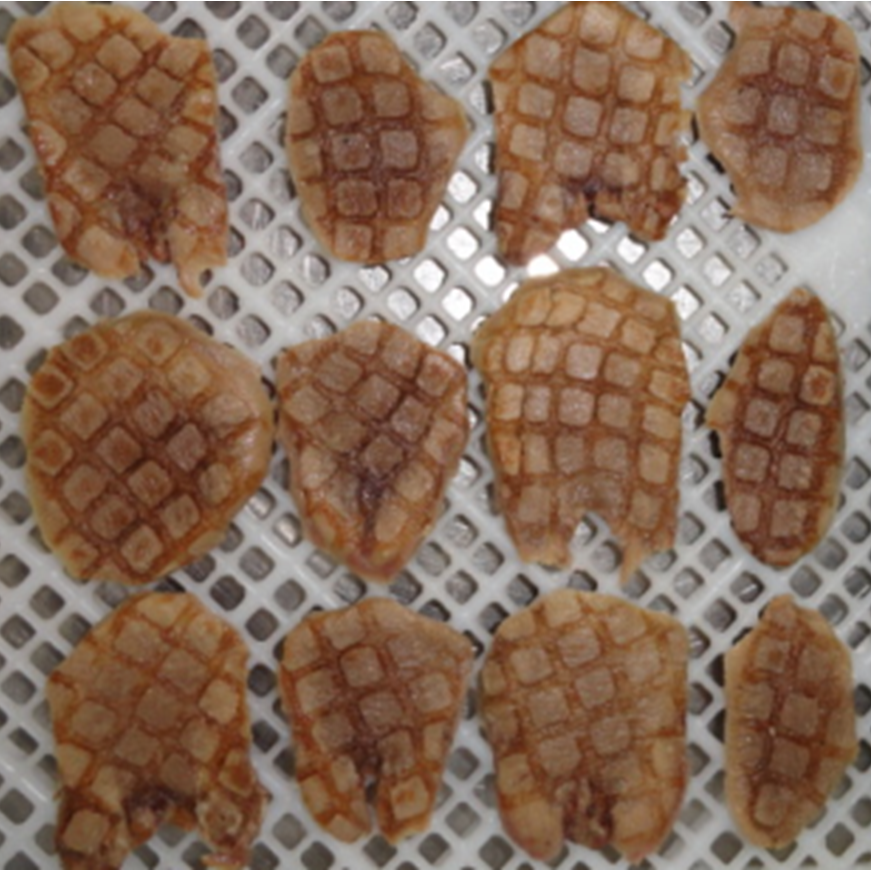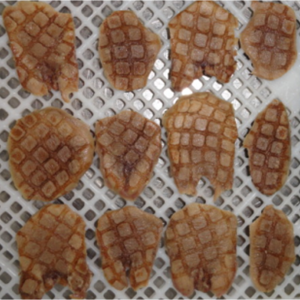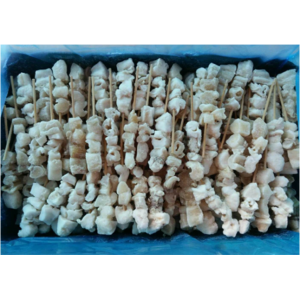Frozen Boiled Beef Tongue
Frozen food is divided into chilled food and frozen food. Frozen food is easy to preserve and is widely used in the production, transportation and storage of perishable food such as meat, poultry, aquatic products, milk, eggs, vegetables and fruits; it is nutritious, convenient, hygienic and economical; The market demand is large, it occupies an important position in developed countries, and it is developing rapidly in developing countries.
Chilled food: does not need to be frozen, it is the food that the temperature of the food is reduced to close to the freezing point and preserved at this temperature.
Frozen food: It is food that is preserved at a temperature below the freezing point after being frozen.
Cooled foods and frozen foods are collectively called frozen foods, which can be divided into five categories: fruits and vegetables, aquatic products, meat, poultry and eggs, rice and noodle products, and prepared convenience foods according to raw materials and consumption patterns.
invention
Francis Bacon, a 17th-century British writer and philosopher, tried to stuff snow into a chicken to freeze it. Unexpectedly, he caught the cold and soon fell ill. Even before the unfortunate experiment with bacon, people knew that extreme cold could prevent eating meat from “going bad.” This caused the wealthy landlords to set up ice cellars in their manor that can preserve food.
None of these early attempts at freezing food caught the key to the problem. It is not so much the degree of freezing, as it is the speed of freezing, that is the key to freezing the meat. Probably the first person to realize this was the American inventor Clarence Birdseye.
It was not until the 1950s and 1960s, when household refrigerators became more popular, that frozen foods began to be sold in large quantities. Soon afterwards, the famous red, white, and blue packaging of Boz Aiyi existed in shops in many parts of the world and became a familiar sight.
A few years after World War I, Bozee conducted a census of wild plants while traveling on the Labrador Peninsula in Canada. He noticed that the weather was so cold that the fish froze hard after he caught a fish. He wanted to know whether this was the key to food preservation.
Unlike Bacon, Birdseye lived in the freezer era. After returning home in 1923, he experimented with a freezer in his kitchen. Next, Boz Aiyi tried freezing various types of meat in a larger freezing plant. Birdseye eventually discovered that the fastest way to freeze food is to squeeze the meat between two frozen metal plates. By the 1930s, he was ready to start selling frozen foods produced at his Springfield, Massachusetts factory.
For Boz Aiyi, frozen food quickly became a big business, and even before he invented the efficient double-plate freezing process, his company had frozen 500 tons of fruits and vegetables a year.
| Product introduction | Raw materials come from slaughterhouses and export registration enterprises in China. Mainly made in China. |
| Product specification | Slice and dice, wear a string |
| Product features | It has the unique taste of ox tongue |
| Apply channel | Catering, convenience stores, familiesUse method: Fry and grill. |
| Storage conditions | Cryopreservation below -18℃ |
Beef tongue can be sauced, roasted, or marinated. Tongues sold in some markets are ready to eat, but raw, smoked or coarsely salted tongues are often available. After cooking, it is good whether it is served hot or cold, with or without seasoning. Salted tongues are usually cooked and sliced with squeezed juice. They are usually served cold. Raw tongues can be boiled with wine or boiled and served with various accessories. Beef tongue and veal tongue are the most common, such as beef tongue in sauce.







